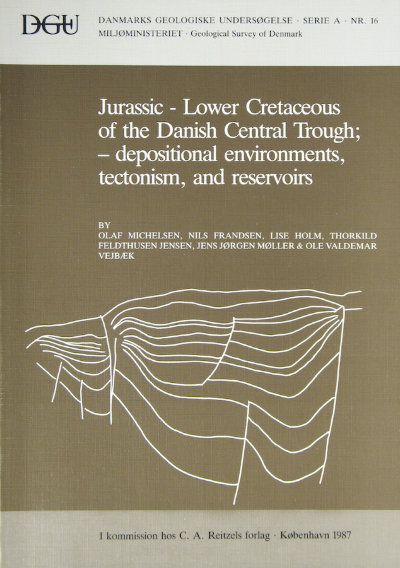Jurassic - Lower Cretaceous of the Danish Central Trough; - depositional environments, tectonism, and reservoirs
DOI:
https://doi.org/10.34194/seriea.v16.7035Keywords:
Danish North Sea, Central Trough, Jurassic, Lower Cretaceous, basin development, depositional environment, tectonism, reservoir bodiesAbstract
A revised model for the Jurassic - Early Cretaceous basin development in the Danish Central Trough is described on the basis of new studies of the bio- and lithostratigraphy and sedimentological and seismic data. The trough has been subdivided into a number of areas, each characterized by specific structural evolution. Middle Jurassic fluvio-deltaic and coastal sands follow the mid Cimmerian unconformity and probably cover large parts of the trough. Right-lateral movements, initiated during the Late Jurassic along WNWESE trending faults, caused fault controlled basin subsidence. The Jurassic and early Early Cretaceous sedimentation were dominated and characterized by clay. More than 4000 m of clay were deposited. Organic carbon rich clays were deposited from the Kimmeridgian until the Late Ryazanian, when deposition of organic carbon poor sediments under oxygenated conditions commenced. During the Late Jurassic transgression coastal sands were deposited along tectonically quiet basin margins. Sands deposited from density currents accumulated along tectonically active margins at the Jurassic-Cretaceous transition. More centrally in the basins, more distal turbidite deposits of Late Jurassic age may be present. Early Cretaceous basin expansion caused by elevation of the sea-level led to decreasing siliciclastic deposition rates and hence to more calcareous sediment types. Contemporaneously basin subsidence decreased. At mid Hauterivian time the importance of differential subsidence governed by left-lateral transtensional wrenching along NNW-SSE trending faults decreased. This change was accompanied by a mild inversion controlled by NNW-SSE directed right-lateral transpression, heralding regional subsidence. Following this inversion chalk was deposited in almost the entire trough area. Later, during the Barremian and Aptian anoxia in the basin caused deposition of marls rich in organic carbon, followed by marls deposited under oxygenated conditions during the Albian transgression. The distribution and character of possible reservoir bodies are discussed.
Downloads
Published
Issue
Section
License
This article is distributed under a CC-BY 4.0 licence, permitting free redistribution and reproduction for any purpose, even commercial, provided proper citation of the original work. Author(s) retain copyright over the article contents.


